For years now, OnePlus has been one of the many Android OEMs that has two big releases per year. Starting last year with the OnePlus 7, it had a standard model and a Pro model. With the OnePlus 8T, however, there's no Pro variant. To be honest, there's too much background to be aware of on this phone.
That's because the OnePlus 8 was really good, the OnePlus 8 Pro was even better, and I'm not sure if the OnePlus 8T sits properly between them. And there's no OnePlus 8T Pro, with CEO Pete Lau saying that the Pro series is meant to be more future-proofed.
The OnePlus 8T has two key features over the OnePlus 8: it has 65W wired charging and a 120Hz display. Now, as it stands, you can get a OnePlus 8 for $599 and a OnePlus 8 Pro for $899. The OnePlus 8T comes in at $749, so $150 gets you those two features, a flat display, and some design tweaks.
Specs
| CPU | Qualcomm Snapdragon 865 |
|---|---|
| GPU | Adreno 650 |
| Body | 160.7x74.1x8.4mm, 188g |
| Display | 6.55 inches, 2400x1080, 402ppi, 20:9, 120Hz Fluid AMOLED |
| RAM / Storage | 12GB LPDDR4x / 256GB UFS 3.1 |
| Battery | 4,500mAh, Warp Charge 65 |
| Camera | 48MP f/1.7 + 16MP f/2.2 ultra-wide + 5MP macro + 2MP monochrome, Front - 16MP f/2.4 |
| Video | 4K - 60fps, Front - 1080p - 30fps |
| Software | OxygenOS 11 |
| Color | Lunar Silver |
| Price | $749 |
Day one
Design
The OnePlus 8T does look different from the OnePlus 8 and even the OnePlus 7T before it. The OnePlus 7T used a circular camera housing on the back, something that I had hoped would become a trend. As it turns out, it was a one-time deal. The OnePlus 8 looked like a smaller OnePlus 8 Pro with the more traditional vertical camera strip that's more recognizably OnePlus. It also came in a beautiful color called Interstellar Glow.
The OnePlus 8T has a rectangular camera housing with rounded corners, just like we've seen from companies like Huawei, Samsung, Apple, and Google. Also, there's no Interstellar Glow. It comes in Aquamarine Green and Lunar Silver, and OnePlus sent me the latter.

It's actually a very pretty device, something that I did not expect to say for this color. Usually, when you get colors like green and silver, silver is designed to be more conservative. It's the frosted glass finish that we've seen plenty of times from OnePlus, and it's still quite slippery. Indeed, you might want to use a case just to make sure this thing doesn't fall off of your desk.
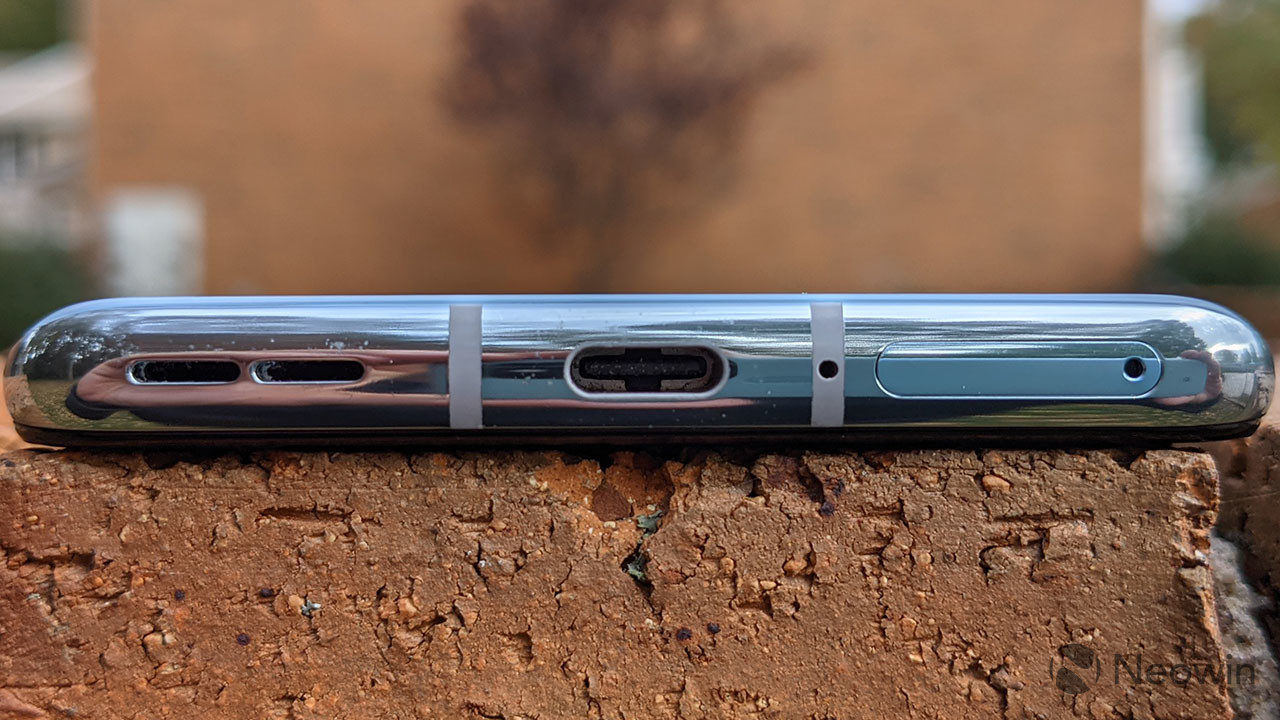
It has the usual metal frame, and you'll find a USB 3.1 Type-C port on the bottom, along with the nano-SIM slot.

On the right side, there's a power button, and above that, a switch for controlling notification sounds. There are three settings: sound on, vibrate, and silent. It's one of my favorite features of OnePlus phones, and I've never seen it on another Android device. The only devices I know of with a switch to control notification sounds are iPhones.

Being that the power button and a switch are on the right side, you can probably guess what's on the left. That's right; it's a volume rocker.
120Hz Fluid AMOLED display
The OnePlus 8T comes with a 6.55-inch 20:9 FHD+ display, and it might be my new favorite smartphone screen, even though I do still love both the OnePlus 8 and the OnePlus 8 Pro. But just like the OnePlus 7T was about getting the 90Hz screen that the OnePlus 7 Pro had, the OnePlus 8T is getting the 120Hz screen that the OnePlus 8 Pro had, and it's really sexy.

The higher refresh rate obviously means that you get smoother animations, and that makes for an overall more pleasant experience. If you've not had the opportunity to see a high refresh rate smartphone, I'd urge you to go to your local store and check one out. You'll likely notice the difference pretty quickly.
However, moving from 60Hz to 90Hz was a 50% increase, and it made a big difference. Moving from 90Hz to 120Hz isn't as noticeable, as it's a 33% increase. I'm not sure that you'll be able to immediately notice the difference between 90Hz and 120Hz.

There are pros and cons too. Obviously, 120Hz is a smoother experience than 90Hz. The bad news is that it uses more of your battery. There's an option to set the screen to 60Hz, but strangely enough, there's no option to set it to 90Hz, which might be a nice balance between refresh rate and battery life. Personally, I'll go for the higher refresh rate any day of the week, especially when this device gets solid battery life and can charge super quickly.
While the screen is undoubtedly pretty and this is one of the few phones with a 120Hz refresh rate, the thing that does it for me is that it's flat. I'm not a fan of curved-edge displays, so it's nice to see a change, although to be fair, the 90Hz display on the OnePlus 7T was flat as well.
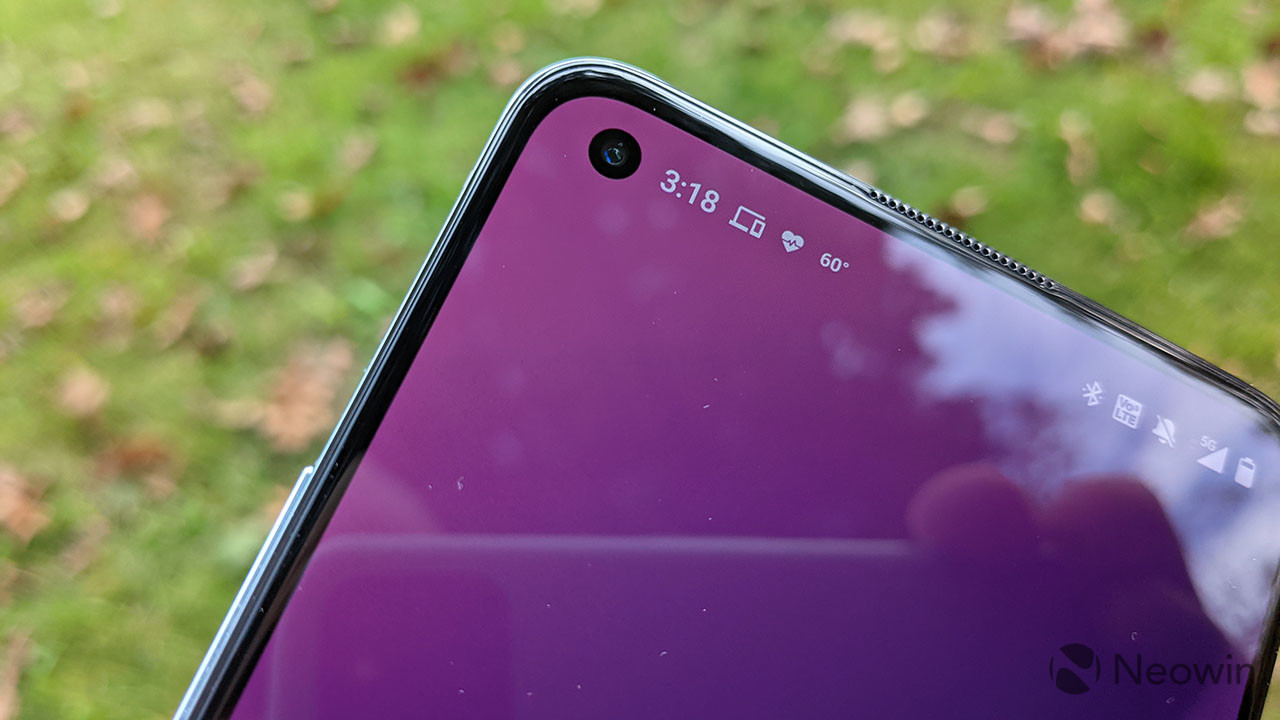
OnePlus did a pretty good job of going edge to edge with the screen, and it's got a hole-punch cut-out in the top-left corner for the front camera. The OnePlus 7 Pro actually had a pop-up front camera, but that feature never made a return.
Camera
The 48MP main sensor on the OnePlus 8T is the same as it was on the OnePlus 8, so you're not going to find many surprises here. There are, however, three other camera lenses, some of which are totally useless, a problem that we're starting to see a lot on smartphones.
First of all, there's a 16MP ultra-wide sensor, which is great. There's also a 5MP macro lens, and a 2MP monochrome sensor. First of all, I do not know, nor do I know anyone that knows, what that monochrome sensor is supposed to do. Like the oh-so-many smartphones on the market with 2MP depth sensors and 2MP macro sensors, this monochrome sensor simply exists as a way for OnePlus to say that it has four cameras.

The 5MP macro lens is a bit more useful, if you're into taking macro shots. It's fixed focus though, so a lot of the shots that I took were out of focus and just got thrown away. Some other OEMs (including OnePlus) have historically used ultra-wide sensors as macro lenses, letting them focus in and crop the image down. Of course, if there was no monochrome lens and macro shots were taken with the ultra-wide lens, then OnePlus would have to say that there are only two cameras, and we can't have that.
That is, of course, unless OnePlus gave us a telephoto lens, something that any premium smartphone with more than two lenses should have. The OnePlus 7T had it, but the firm got rid of it in the OnePlus 8.
I did try and play around with the macro lens a lot, and some of them came out really good, like the pictures of the bee toward the end. It's terrible in low-light though, as it's much less capable than the main sensor.
This camera really doesn't handle colors very well. The bright reds look blown out, and it doesn't handle shades of yellow very well in my picture of a sandwich. The camera isn't terrible or anything, but it's definitely not winning any awards. For a $749 smartphone, it's fine, but you're really paying for the display and performance.
Performance, battery life, and software
The OnePlus 8T comes with a Snapdragon 865 chipset, 12GB LPDDR4x RAM, and 256GB of UFS 3.1 storage, so this thing is fast. According to spec sheets, it does start with 8GB RAM and 128GB of storage, although I assume that that's not sold in the United States, because this is the model that you get for $749.
There's no Snapdragon 865+, a break from tradition for OnePlus. I assume that since there's no OnePlus 8T Pro, the company didn't want to be using the better chipset in the lower-end model. It's fine. With my concerns over this device, the lack of a Snapdragon 865+ is so far from the top of the list.

Battery life is fine, as you should have no problem getting through the day with the 4,500mAh battery. If you can't, this thing has 65W fast charging, called Warp Charge 65. It replaces Warp Charge 30T, and it's one of the fastest ways that I've seen to charge a phone. We're talking hours of use off of minutes of charge. If you lose your charger and have to use a different one, you can get up to 27W charging, which is still pretty impressive.
Also, the Warp Charge 65 charger can charge other devices at up to 45W. That means that you can actually use it to charge a laptop if you want to.
One thing that the OnePlus 8T still doesn't have is wireless charging, which to me is a deal-breaker. I'd take the 30W wireless charging on the OnePlus 8 Pro any day over the 65W wired charging here.
The OnePlus 8T comes with OxygenOS 11, which is OnePlus's Android variant that's based on Android 11. It has some cool features, such as Zen mode. Zen mode puts your phone in a state where you can't use it for a set amount of time. When it first debuted, it was only for 20 minutes, but now you can set it yo 30, 45, 60, 90, or 120 minutes, and it's awesome. It's another thing that I love about OnePlus devices, along with the switch for controlling notification sounds. Once you start Zen mode, you can't turn it off, even by restarting the phone. You can make emergency calls, receive calls, and access the camera, and that's it.
For benchmarks, I used Geekbench 5, AnTuTu, and GFXBench. First up is Geekbench 5, which tests the CPU.
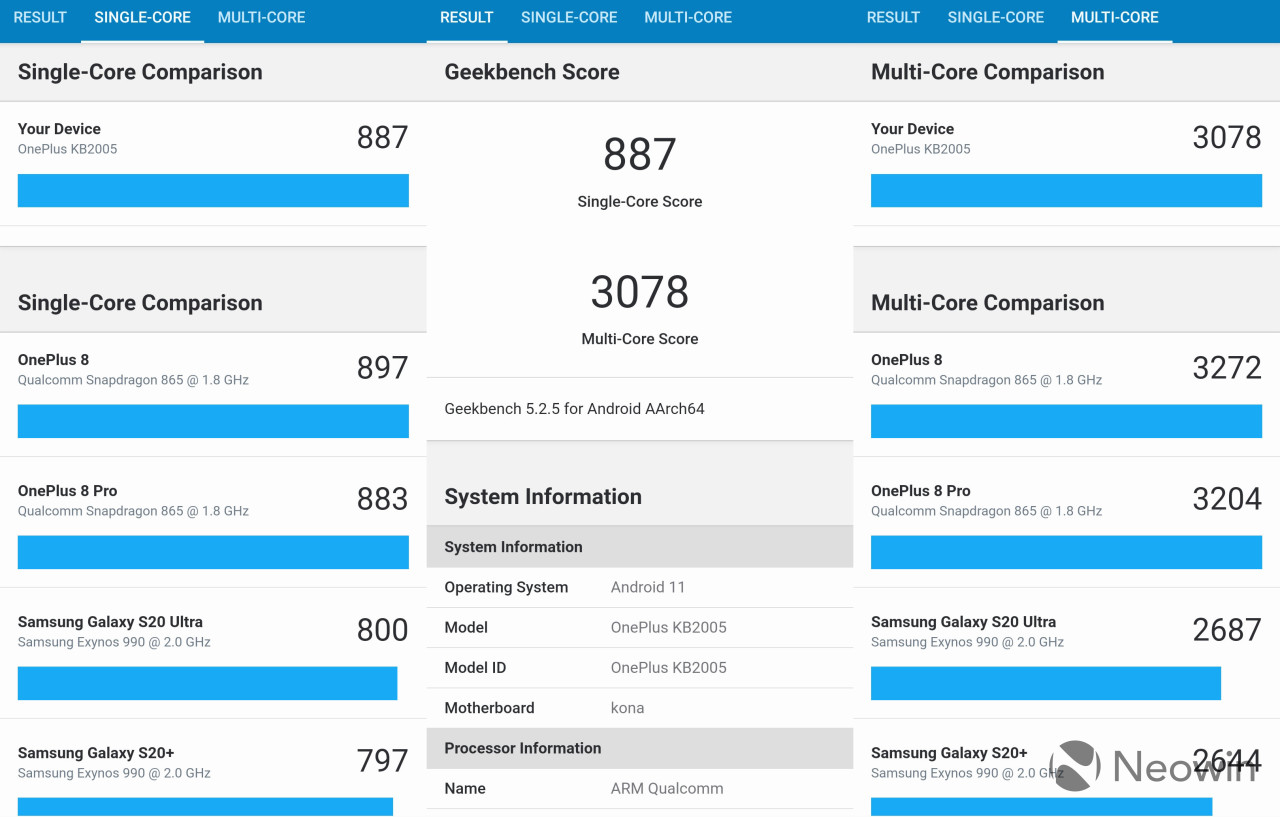
None of the scores here are surprising, as we've been testing Snapdragon 865 devices for over half a year now. Let's move on to AnTuTu, which is a more complete test.

This score actually got beat by the 577,005 score I got on the OnePlus 8 and 576,696 I got on the OnePlus 8 Pro. Like I said though, there's nothing to be surprised by here. Finally, we have GFXBench, which tests the GPU.
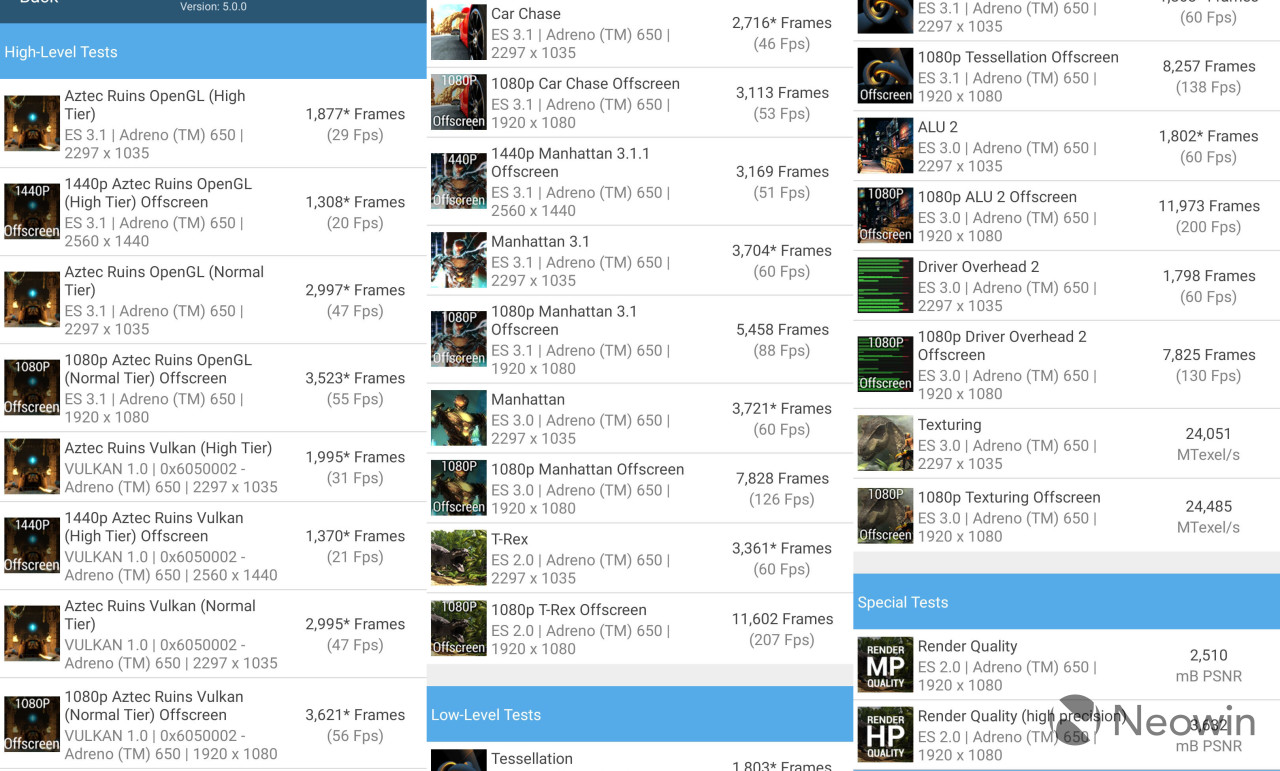
Conclusion
Like I said before, the spec sheet says that this device starts with 8GB RAM and 128GB of storage, but that's not in the United States, because we only have the $749 model with 12GB RAM and 256GB of storage. I'd happily give up that storage and RAM, along with both the macro and monochrome lenses, for some other key features. It's about time to add wireless charging to the non-Pro, and I'd love to see a telephoto lens.
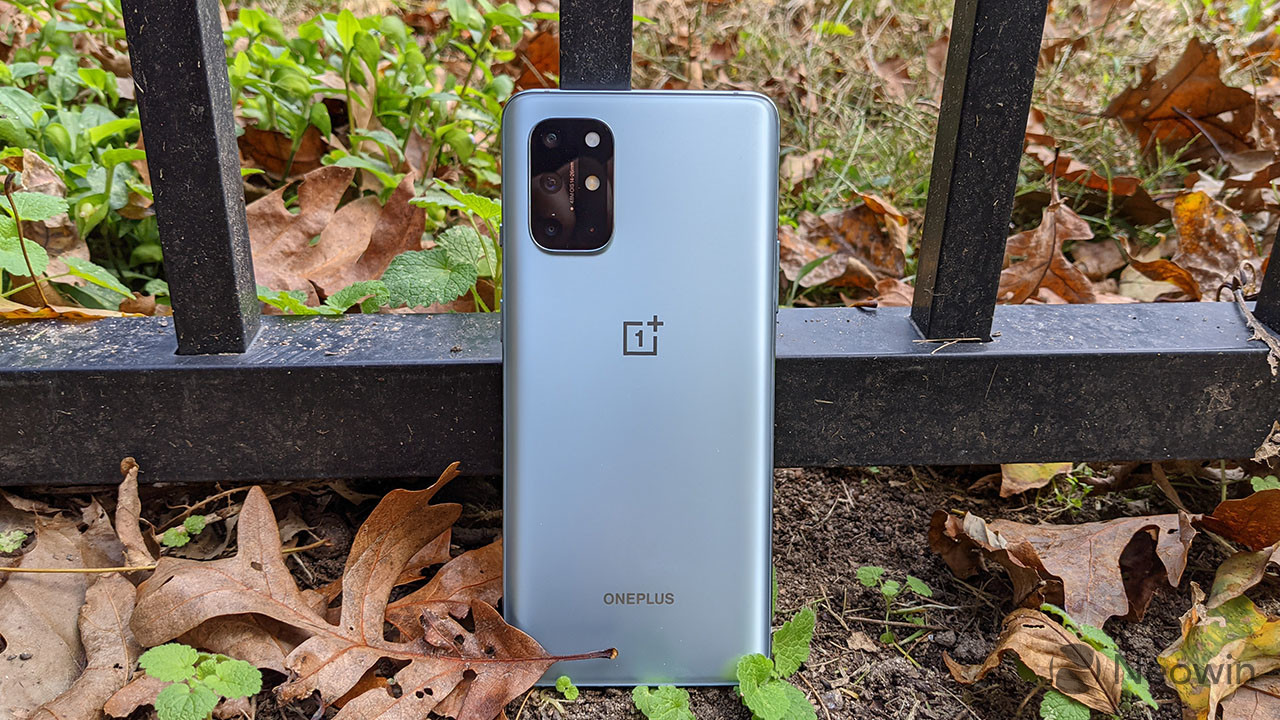
It's still a great phone though, something that we've come to expect from OnePlus. OxygenOS is still an excellent Android skin, and the hardware is quite good. Like I said, you're pretty much paying for the 120Hz Fluid OLED display and the performance. Aside from using a Snapdragon 865 instead of an 865+, these are the best internals that you'll find.
Warp Charge 65 is insanely fast for wired charging, although you do have to keep a wired charger around. For $749, I think this is a solid device, but you'd also do better by spending a bit more for the superior camera and wireless charging found on the OnePlus 8 Pro. And if you're looking to spend less, you might do better by saving a bit more by getting the OnePlus 8.
They're all phenomenal phones. If you want to check out the OnePlus 8T, you can find it on Amazon here.
As an Amazon Associate, Neowin may earn commission from qualifying purchases.






































































4 Comments - Add comment